
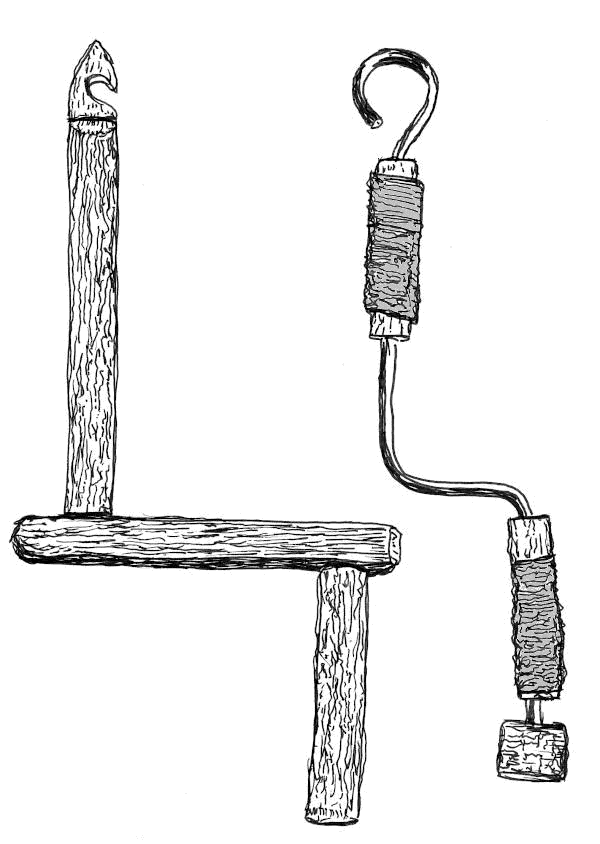
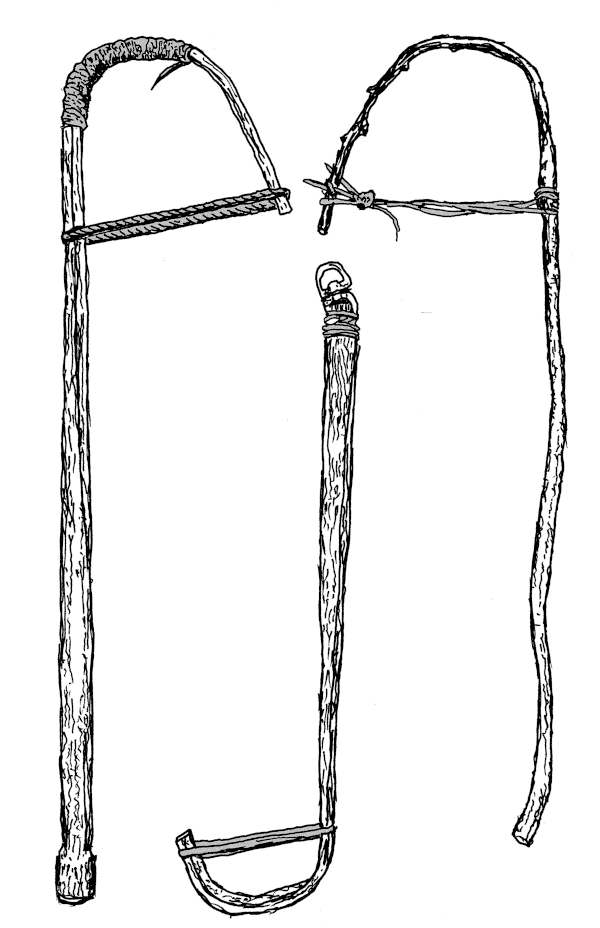
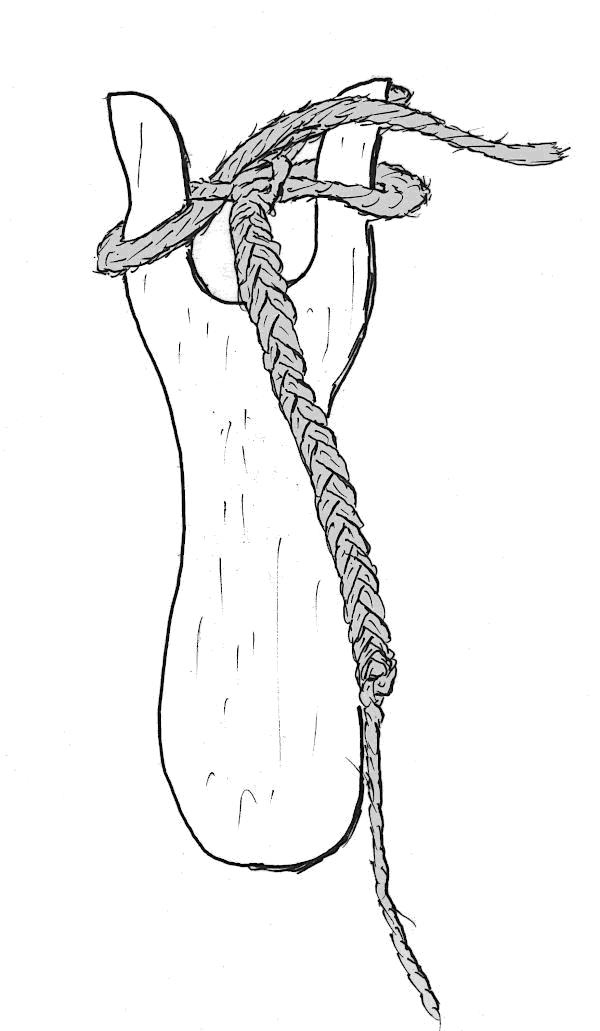


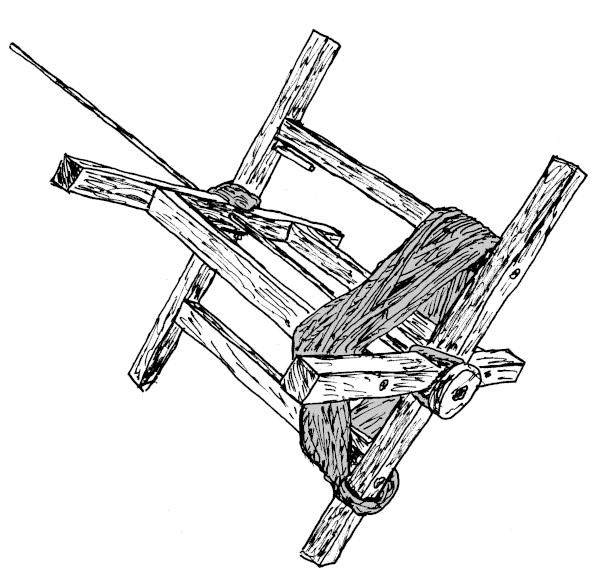

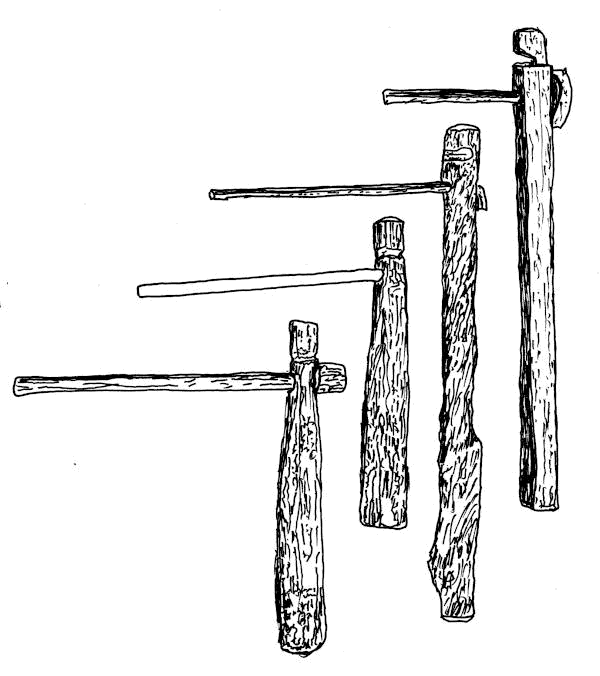
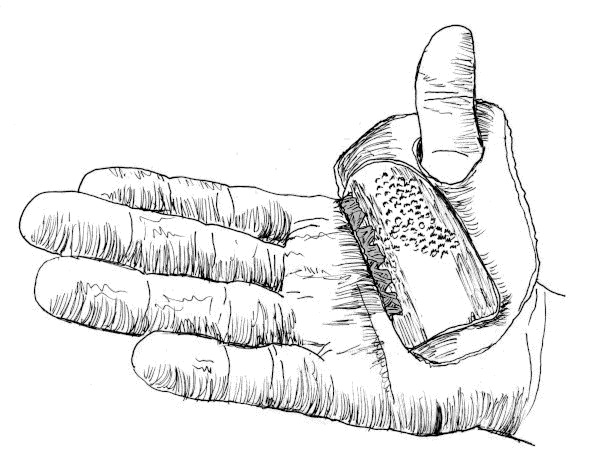
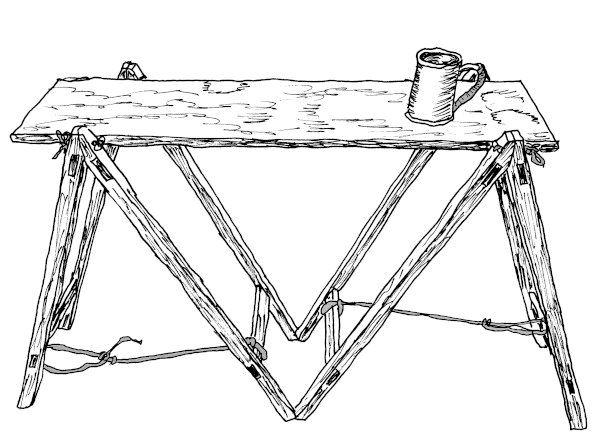
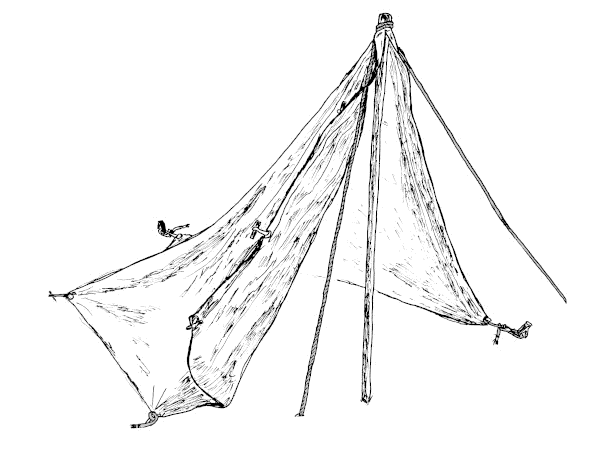

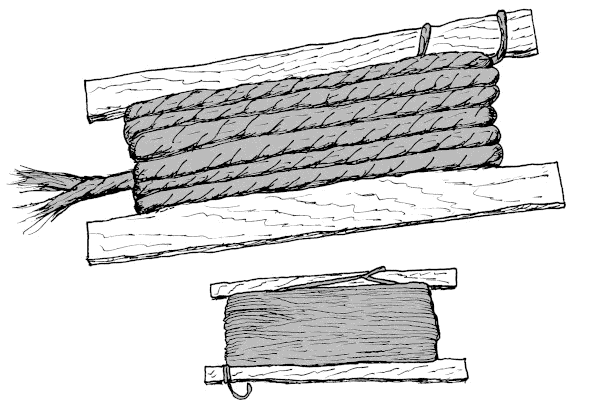
| Home |
I try to keep the materials and techniques as period appropriate as I can. I don't claim to be an expert. If you see something that doesn't seem right, please get in touch with me.
I'm trying to stay within the limits of a rural settler, out of indentures, making his way mostly on his own. I'm also trying to constrain my equipment to something that could be packed on a single mule. And my back.
Unlike Aristotle in the quote above, I am going to talk about equipment. And happiness does come from working with tools you've made. I'll admit that virtue is also important for happiness, but I'm not offering advice on that.
The basic skills you'll need for these projects are what any American settler would need: simple carpentry, simple sewing, and basic rope work. You can argue that these are skills that everybody should have in today's world also. There's a bibliography at the bottom of this page of excellent introductory books that will help if you're feeling rusty.














The old system is based, roughly, on the human body. Your foot is roughly one foot long. The distance from your pinky finger-tip to your thumb-tip, with your fingers spread wide, is roughly eight inches. From your nose to your outstretched finger-tip is roughly a yard. Easy enough to use out in the woods. And none of the dimensions used here need to be very precise.
The Metric System is based on Universal constants. The meter is one ten-millionth of the arc distance from the Equator to the Pole. There were many Arc Measurements in the 19th, and 20th Centuries, each coming up with a slightly different value. Each Arc Measurements took years of surveying, and lots of math. This is not something your average farmer is going to readily compute at his farm in the woods.
Measurement conversion tools are just a few clicks away on the web and on most smart phones, if you feel the need for metric.
Making Rope
Keith, B
Pre-Revolutionary Ropemaking in the American Colonies
http://bkeithropemaker.com/index.html
Sewing and Rigging
604
Marino, Emiliano (1994)
The Sailmaker's Apprentice
Hardcopy
International Marine
ISBN 0-07-1376429
Traditional Carpentry
815
Underhill, Roy (1981)
The Woodwright's Shop
Hardcopy
University of North Carolina Press
ISBN 0-8078-1484-9
| Colophon | Contacts |